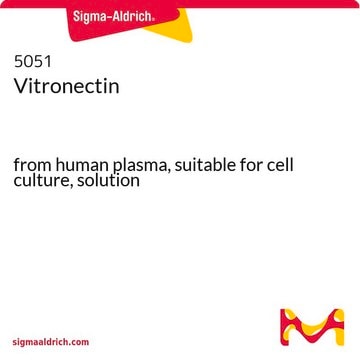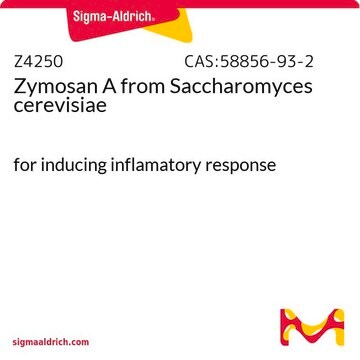V0132
Rat Vitronectin
from rat plasma, powder, suitable for cell culture
Synonym(e):
Serum spreading factor
About This Item
Empfohlene Produkte
product name
Vitronectin from rat plasma, lyophilized powder, BioReagent, suitable for cell culture
Biologische Quelle
rat plasma
Qualitätsniveau
Produktlinie
BioReagent
Form
lyophilized powder
Mol-Gew.
75 kDa
Verpackung
pkg of 50 μg
Methode(n)
cell culture | mammalian: suitable
Oberflächendeckung
0.1 μg/cm2
Löslichkeit
water: soluble 1.00 mL, clear, colorless
UniProt-Hinterlegungsnummer
Versandbedingung
dry ice
Lagertemp.
2-8°C
Angaben zum Gen
rat ... Vtn(29169)
Allgemeine Beschreibung
Anwendung
Biochem./physiol. Wirkung
Komponenten
Vorsicht
Angaben zur Herstellung
Lagerklassenschlüssel
11 - Combustible Solids
WGK
WGK 3
Flammpunkt (°F)
Not applicable
Flammpunkt (°C)
Not applicable
Persönliche Schutzausrüstung
Eyeshields, Gloves, type N95 (US)
Analysenzertifikate (COA)
Suchen Sie nach Analysenzertifikate (COA), indem Sie die Lot-/Chargennummer des Produkts eingeben. Lot- und Chargennummern sind auf dem Produktetikett hinter den Wörtern ‘Lot’ oder ‘Batch’ (Lot oder Charge) zu finden.
Besitzen Sie dieses Produkt bereits?
In der Dokumentenbibliothek finden Sie die Dokumentation zu den Produkten, die Sie kürzlich erworben haben.
Artikel
3D cell culture overview. Learn about 2D vs 3D cell culture, advantages of 3D cell culture, and techniques available to develop 3D cell models
Cancer stem cell media, spheroid plates and cancer stem cell markers to culture and characterize CSC populations.
Unser Team von Wissenschaftlern verfügt über Erfahrung in allen Forschungsbereichen einschließlich Life Science, Materialwissenschaften, chemischer Synthese, Chromatographie, Analytik und vielen mehr..
Setzen Sie sich mit dem technischen Dienst in Verbindung.






